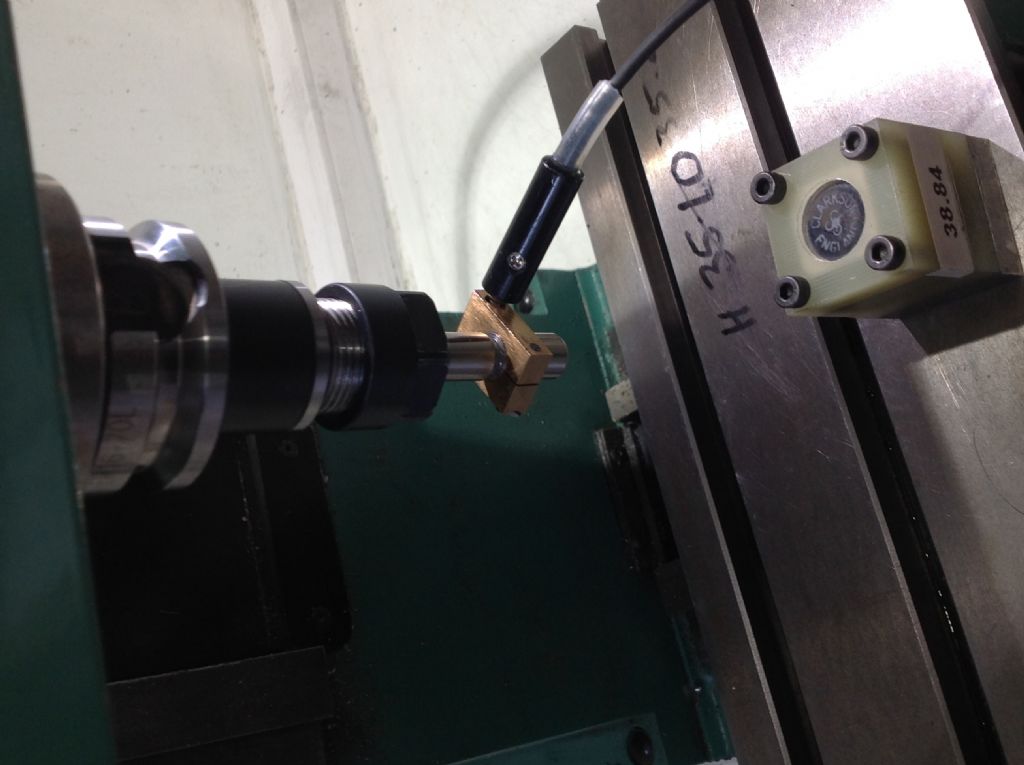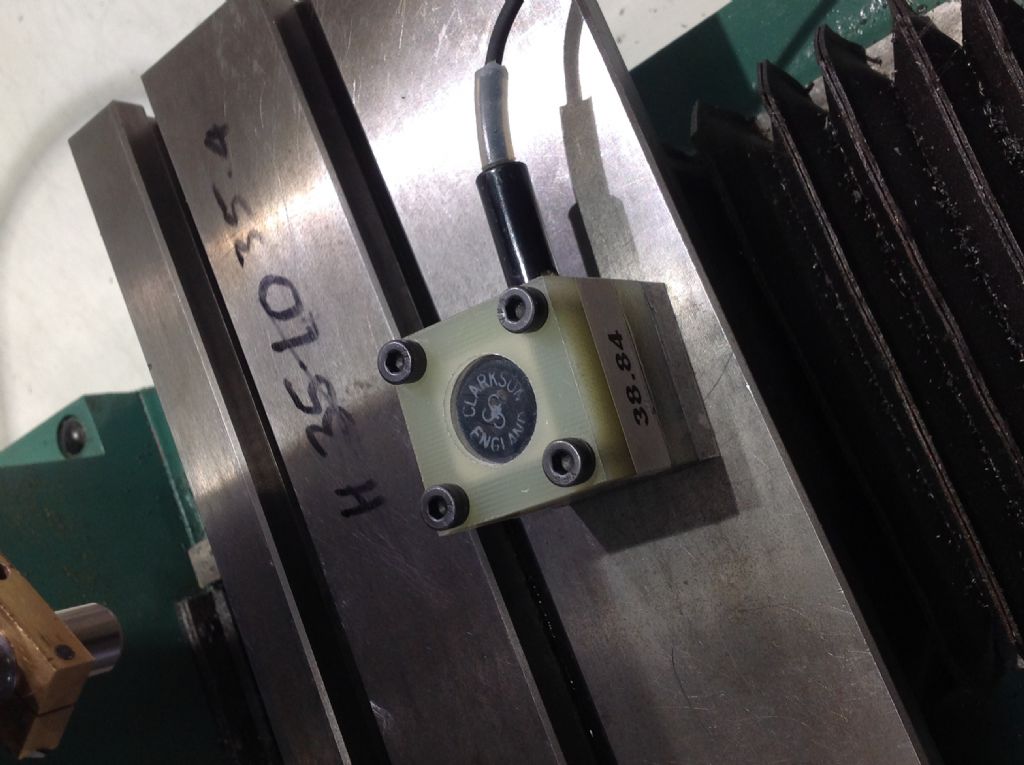The wiggler (which I favour) and the simple edge finder liked by Murray and others work on the same principle. For all practical purposes a wiggler is the inherently amplified version.
Having the bitch job from hell sitting in the Bridgeport needing some in process edge finding ('cos someone drew it up to be done on his CNC'd Taig) I thought I'd take the opportunity to revisit the simple edge finder after 30 or so years. Half an hour of playing confirmed my view that a good, Huffam, wiggler is at least as accurate and generally much easier to use.
Although once you get your eye in its not that hard to see when the simple edge finder snaps true the wiggler is that much more obvious. I reckon to stop feeding just as the stem starts to move. Usually things settle at about half a ball ends width out of vertical which is easily under a thou error on both my Huffams. Long stem is an advantage when working off the back side of job as required if using the 1/2 function on a DRO for very fast and error free centre-line location. The only real disadvantage of the wiggler is its length. Easy to run out of headroom on small machines.
Huffam leaflet shows both vertical and horizontal use.
I have a Hamier 3D Taster if I want to get serious about things but it pretty much never sees daylight. I seriously doubt if its any more accurate than a wiggler used on both sides with the centre-line calculated via the 1/2 function of a DRO. Probably a little better than a wiggler in single side mode.
However you have to get a good wiggler. As mentioned in my earlier post the common, relatively cheap, sets in a plastic wallet with snap-in collet type carrier for the probes are an unreliable waste of time. You can pin them down, I got mine to a reliable 3-4 thou kick off error, but life is too short when better things can be found!
Clive
Edited By Clive Foster on 09/03/2018 21:49:33
Pete.








